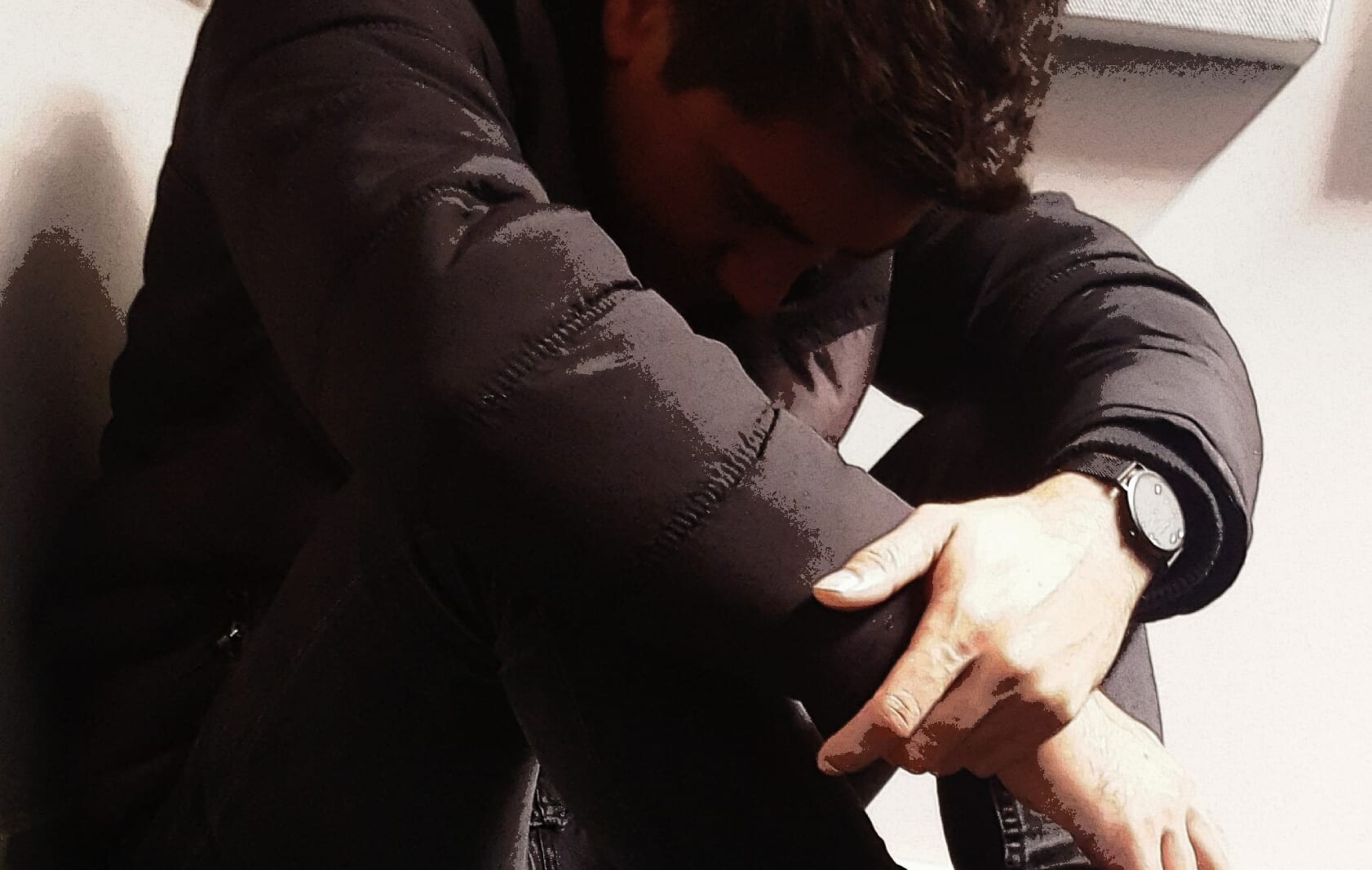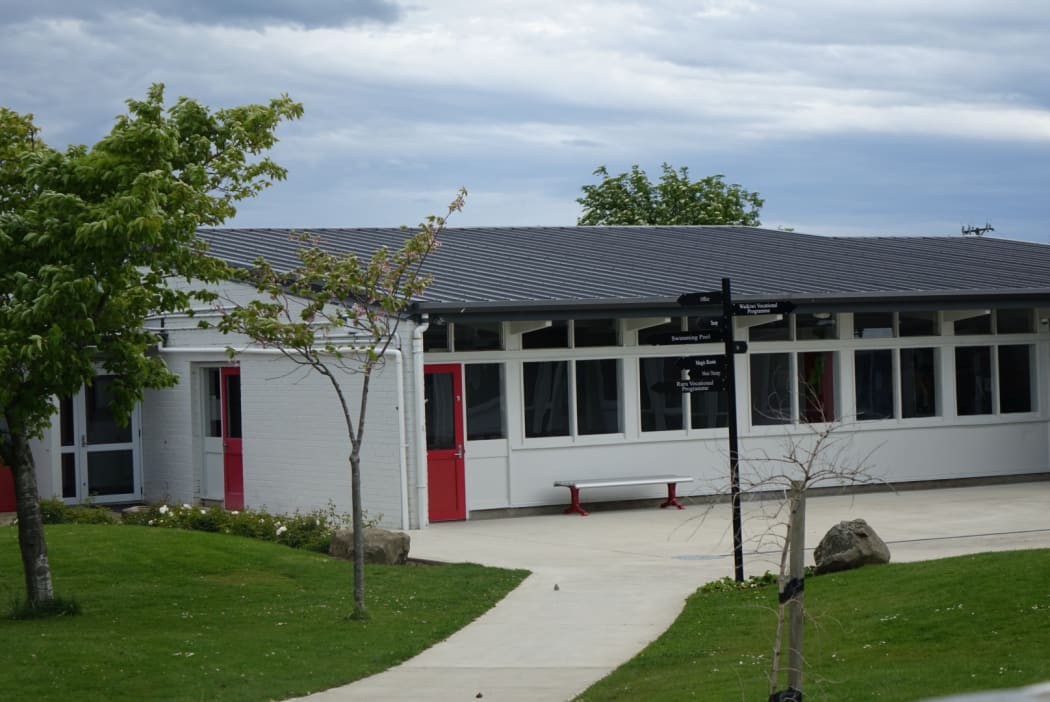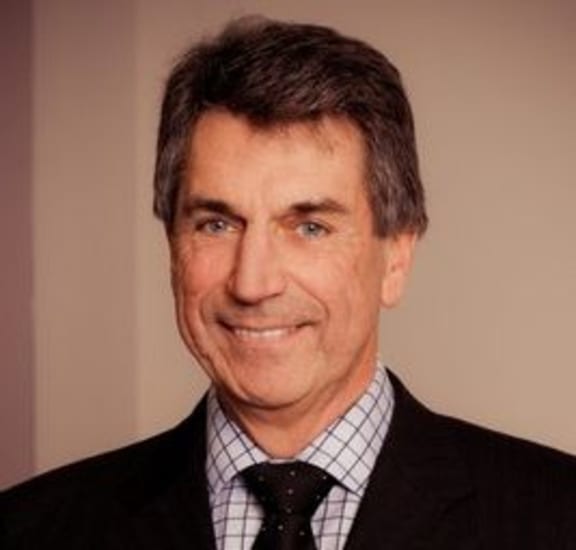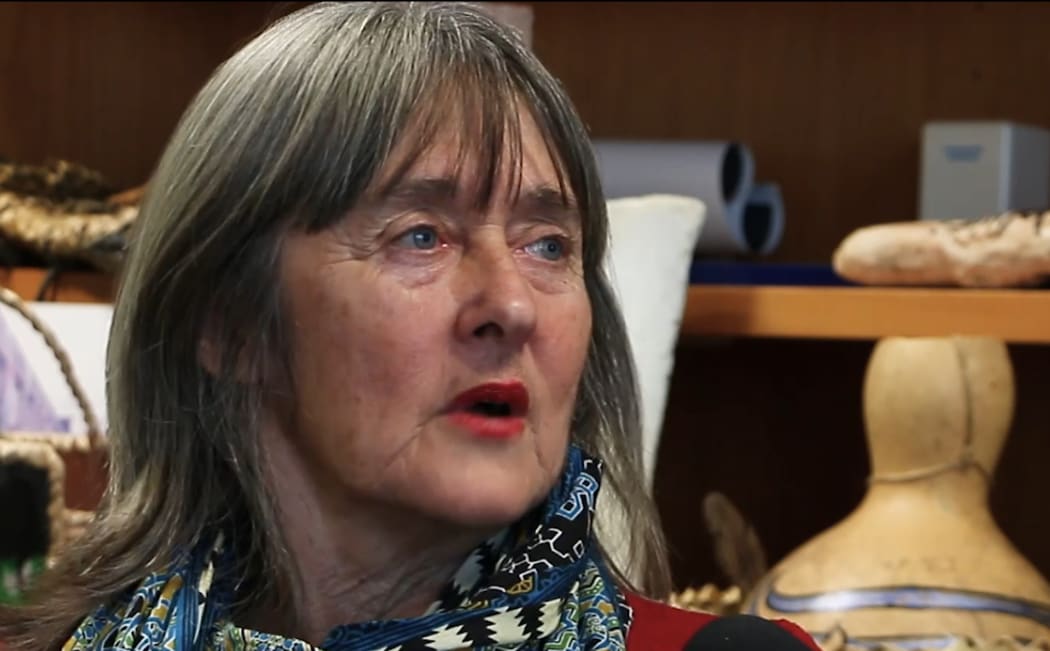A Southland mum has made it her mission to find out what schools used seclusion in the past, but the Ministry of Education says it simply doesn't know.
Victoria Turnbull, whose autistic son was locked in a seclusion room, has obtained a list of 19 schools that self-reported as having seclusion facilities, only after the Ombudsman intervened, and more than a year after she asked the ministry for it.
Some principals say they're outraged they've appeared on the list.

Photo: RNZ
In 2016 the Ministry of Education discovered - along with New Zealand - that some schools were placing children, many with disabilities, in seclusion rooms against their will.
The ministry immediately directed schools to stop the practice, and a law change banning the rooms passed several months later.
At the time, the ministry named 17 schools that used seclusion in 2016 but refused to name the other 19 schools that had initially self-reported as having seclusion facilities.
Ms Turnbull made it her mission to obtain the names of those schools, because she felt it was a parent's right to know if their child had ever been kept in seclusion.
Her autistic son had been placed in seclusion at Ruru Specialist School on several occasions between 2011 and 2014.

Ruru Specialist School Photo: RNZ / Ian Telfer
In his investigation into her son's treatment at the school, Ombudsman Peter Boshier said she had been instrumental in getting the law changed.
Early last year she asked the Ministry of Education for the names of all the schools that had self-reported as using seclusion, but her request was refused because the ministry did not intend to "name and shame" those schools.
"We feel parents need to be informed. It shouldn't be something that's covered up, you know, for the sake of not naming and shaming schools," Ms Turnbull said.
"[Parents] need to ask if it happened to their child and then they need to find out why they weren't told about it."
The names of the schools were only given to her after the Ombudsman intervened, and a year after her initial request.

Judge Peter Boshier says the White Ribbon campaign has been damaged. Photo: SUPPLIED
The 19 schools are scattered throughout the country, from Auckland to Invercargill.
The ministry said these schools self-reported as having seclusion facilities, but upon further investigation 12 were found to have used appropriate timeout behaviour management practices.
The ministry refused to tell Checkpoint the names of the other seven schools.
It said its survey of 2529 schools at the end of 2016 was to find out which schools were currently using seclusion and it had not tried to identify what schools used seclusion prior to that.
Koraunui School in Lower Hutt refused to comment. Allenvale Special School's acting principal referred Checkpoint to board chair Graham Wood, who said the school had decided to decline an interview request.
He did, however, say the school had used a seclusion "area" prior to 2016 but he didn't know the history of it other than that it was used very minimally and with the permission of caregivers and parents. When asked if students were ever locked in the room he said, "not to my knowledge".
A parent whose child previously attended the school said she knew about the room but assumed it was only used very occasionally and as a last resort if children were very violent. She said if her daughter had been put in there she would have "hit the roof".
Principals for the other 17 schools on the list categorically denied using seclusion or having seclusion facilities.
Other schools may have used seclusion
The ministry has said there was a risk other schools may have used seclusion, because they had been asked to self-report. Ms Turnbull said she was certain there were.
"I've been contacted by a number of parents who suggest that the schools their children were attending put their child in seclusion rooms, into a room that their child could not freely exit and they were put there in force."
She said those schools were not on the list of schools named in 2016, nor on the list she had recently obtained.
Former Green MP Catherine Delahunty said it was not good enough. She said the ministry should have tried to identify and name schools that had used seclusion in the past.
"Children who have experienced seclusion have suffered trauma and the parents and whānau might not even know.

Photo: VNP / Daniela Maoate-Cox
"So I think that the honourable thing to do with this issue is for people to have the knowledge. I know schools are worried about being regarded as being abusive and failing children. Many of them have done that because they didn't know, or many who may have done this in the past - and we still don't know if they have - maybe because they have not known what else to do, but we can't deal with this issue by putting it under the carpet.
"It's like any other form of trauma. The children and the families, it needs to be open, and they need to know about it."
Lack of clarity
Many schools on the list told Checkpoint the ministry could not define seclusion when staff called out of the blue to ask if their school used a seclusion room.
Laingholm School principal Martyn Weatherill was among many who said there was a lack of clarity.
"The ministry when they first started ringing schools couldn't define what a seclusion room was, so in other words they couldn't tell us what it was they were asking us do we have one of. They were asking a yes/no question and they couldn't actually tell us what it was they were asking about."
Mr Weatherill said his school had never secluded students nor had a seclusion room.
"Because we didn't categorically say no, what we said was 'well, because you actually can't tell us what one is, we can't actually tell you the answer to your question, could you please find out and come back to us, I think that's why my name of my school is on your list."
The ministry has now clearly defined seclusion as when a student is placed in a room involuntarily, alone and from which they cannot freely exit or believe they cannot freely exit.
It said it had worked intensively with the 17 schools identified as using seclusion in 2016 and supported them to develop alternative practices for managing challenging behaviour.
Sixteen of the schools had undertaken the ministry's Understanding Behaviour: Responding Safely de-escalation training programme, and one had had tailored behaviour training focussed on meeting the needs of an individual student.
The Ministry is currently investigating one case of seclusion that pre-dates the law change.
*Palmerston North Adventist Christian School did not respond to several requests to comment by the time this story aired. Its principal has since confirmed the school has never used seclusion, nor does it have a seclusion room.

